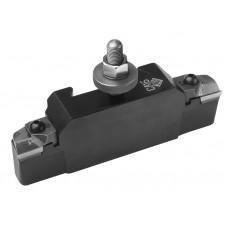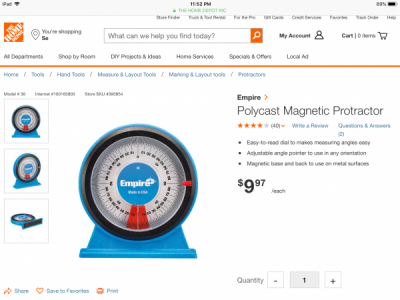Being motivated by Mikey's great instruction on tool grinding, I dove in today and seems I was reasonably successful.
Success (I think?) grinding a turning (square) tool. I'm sure it would be easier with the models on hand, but wanted to try it just based on Mike's pictures and descriptions. I think I'm close (it seemed to work very well in brass, just ok on 303 stainless)
I installed the platen on my 1x42 belt grinder. It's just steel, but seems flat.
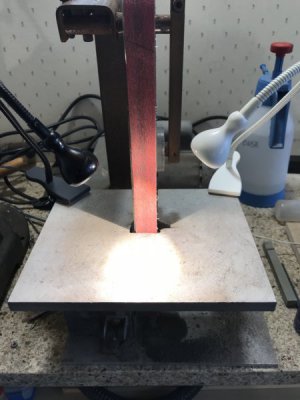
Set the table to 15°
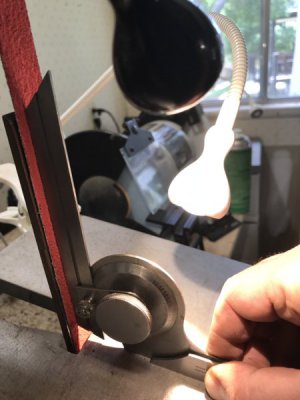
Laid out the geometry on the blank. I reused a MoMax blank, so it looks a little funky, but I think I got the tip geometry correct.
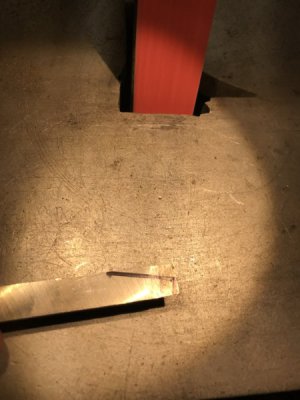
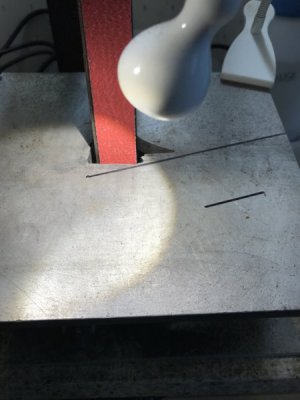
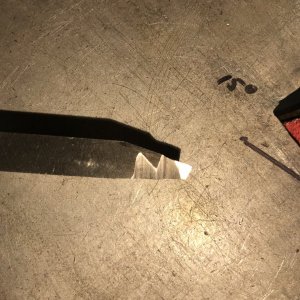
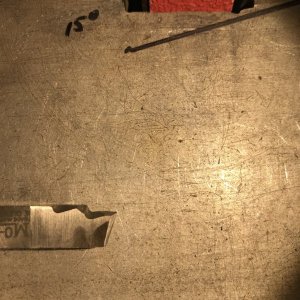
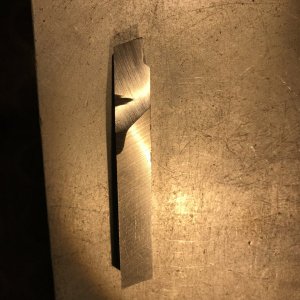
After grinding the shape, I honed the cutting surfaces on 80um diamond film and finished with a 6000 grit water stone. Here are the results on brass:
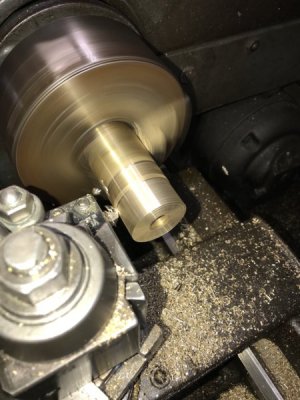
Short curls. Still a lot of glitter--think I need to take deeper cuts?
Success (I think?) grinding a turning (square) tool. I'm sure it would be easier with the models on hand, but wanted to try it just based on Mike's pictures and descriptions. I think I'm close (it seemed to work very well in brass, just ok on 303 stainless)
I installed the platen on my 1x42 belt grinder. It's just steel, but seems flat.

Set the table to 15°

Laid out the geometry on the blank. I reused a MoMax blank, so it looks a little funky, but I think I got the tip geometry correct.





After grinding the shape, I honed the cutting surfaces on 80um diamond film and finished with a 6000 grit water stone. Here are the results on brass:

Short curls. Still a lot of glitter--think I need to take deeper cuts?

